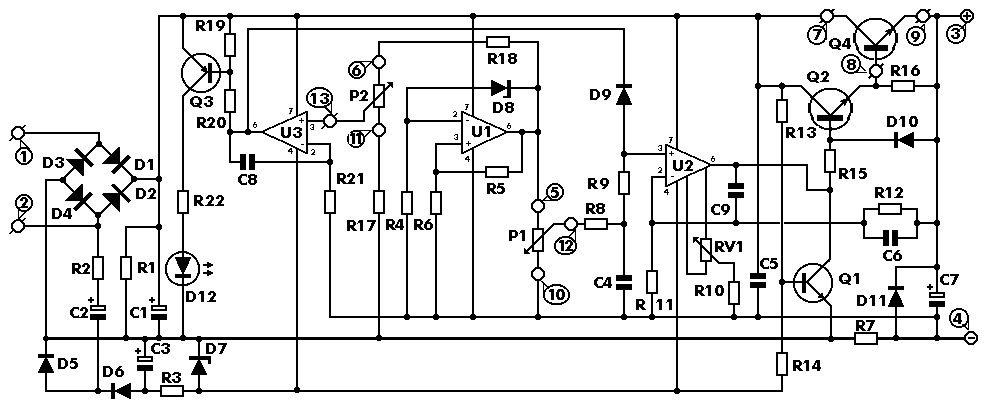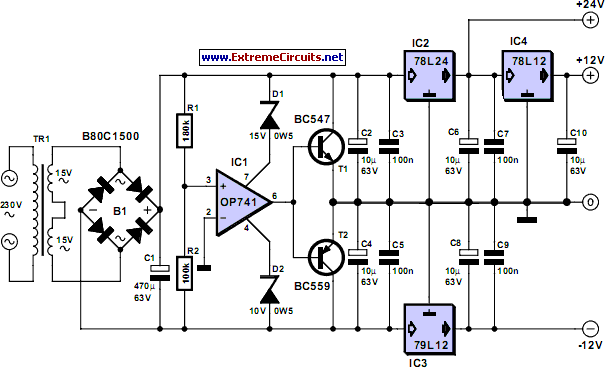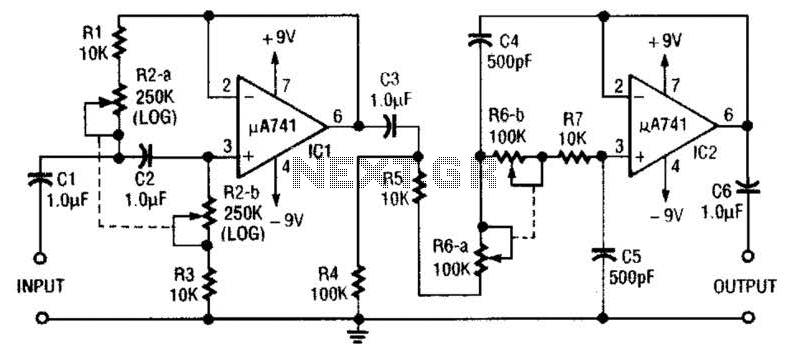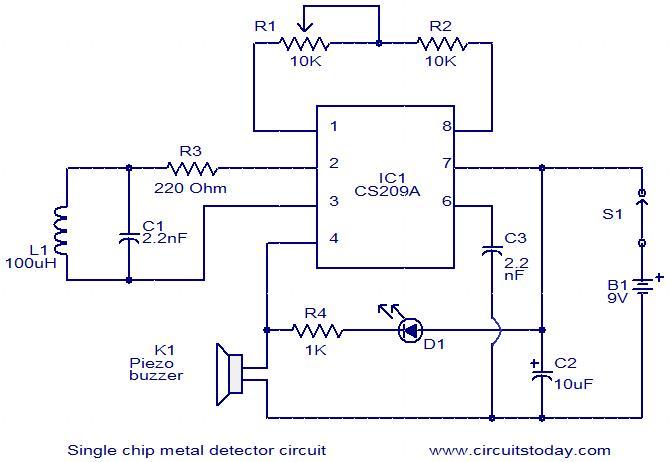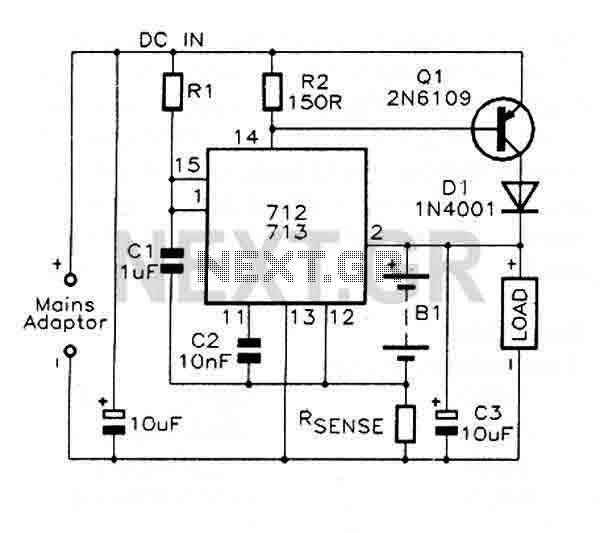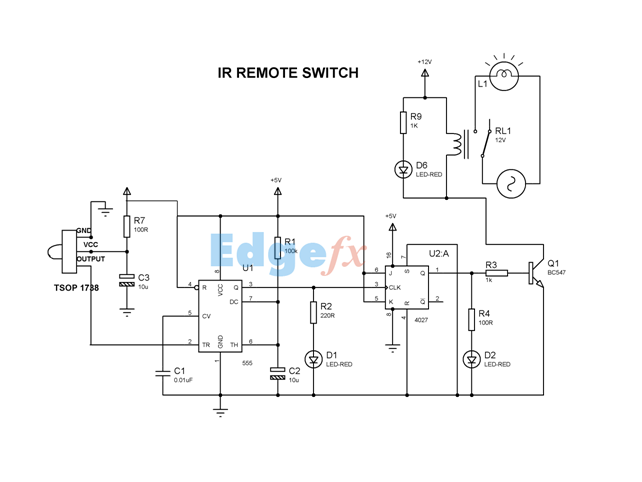
Wide band power detector to control microwave station
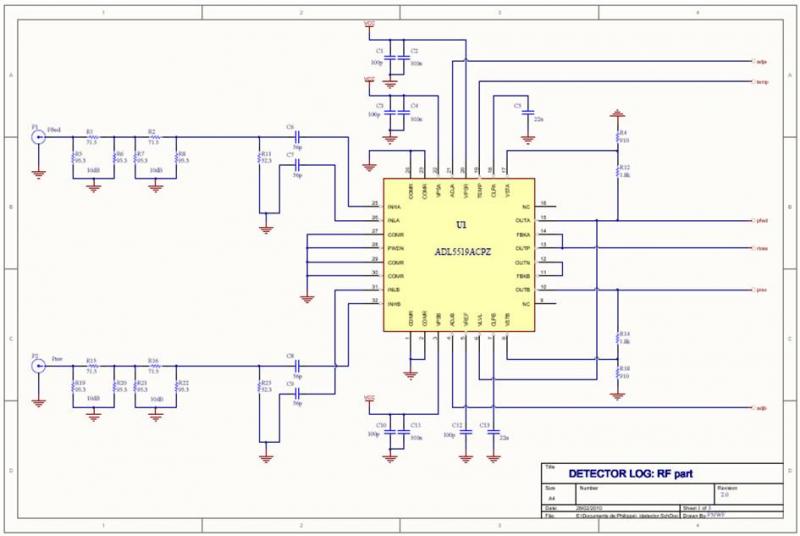
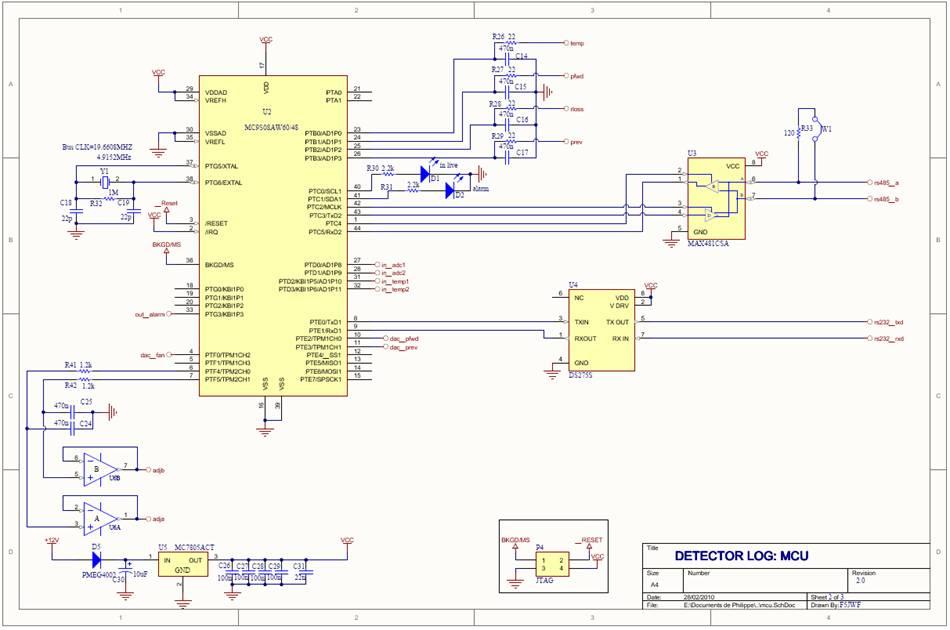
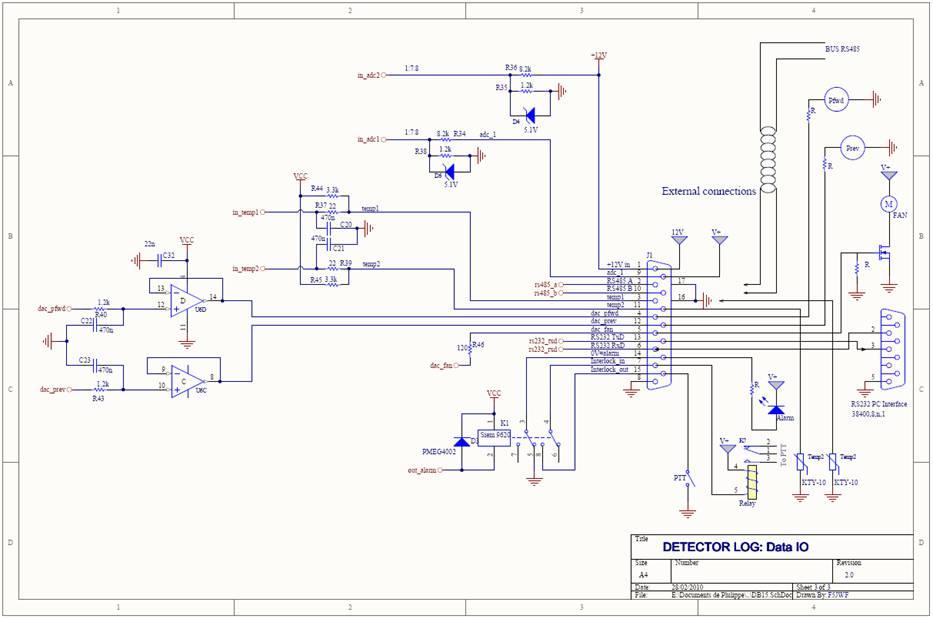
The ADL5519 is particularly focused on bandwidth, specified up to 8 GHz, though it remains usable at 10 GHz with reduced dynamic range. It features two channels, allowing for the measurement of power transmitted to the antenna and the reflected wave, facilitating the calculation of return loss and enabling PTT blocking when issues arise. Originally intended for an EME 13 cm station, the module is remotely controlled via a serial interface (RS232 and RS485), allowing installation 30 meters away from the shack. A simple RS232 VT100 terminal provides full control of the assembly, as all software is embedded. Additionally, the system includes features such as measuring the temperature of the power amplifier using KTY probes and monitoring power supply voltages.
The calibration process involves introducing a known level at the RF input and inputting this level into the microcontroller to correct measurement errors. Several points are necessary for effective correction, which are frequency-dependent. The calibration algorithm determines the best linear regression to minimize errors across the entire dynamic range. This process is conducted using an external test bench that includes an RF synthesizer and a commercial power meter, taking approximately 50 data points of Vdetected as a function of Pin, and calculating the gain and offset for each frequency. These values are stored in ROM. The calibration accounts for the linearity error of the detector and the imperfections of the input attenuator, with measurements displayed directly in dBm.
For the proposed kit, two types of calibration are possible: the default standard calibration (kit#1 and kit#2) offers an accuracy of approximately ±0.5 dB up to 1.2 GHz and about ±1 dB for higher frequencies. A dedicated calibration for the DetLog board, tested only on kit#3, achieves an accuracy of around ±0.2 dB. It is important to note that the calibration algorithm does not operate across the frequency axis, meaning that no correction occurs between two calibrated frequencies. For instance, to measure at 3400 MHz, one would need to use the nearest calibration, such as at 2320 MHz, resulting in suboptimal correction. A built-in calibration process can be executed at 3400 MHz to calculate linearization parameters for this frequency, which can then be stored in available memory.
The built-in calibration utilizes up to eight measurement points to calculate linearization, and this procedure can also accommodate external attenuators or coupling factors. Upon completion of the calibration process, the parameters are saved into the current calibration memory located in ROM, which retains data even after power-off. A total of nine memory banks are available for saving calibration data for future use.
This comprehensive calibration and measurement system ensures accurate power measurement and reflects the robustness of the ADL5519 in various applications, particularly in high-frequency environments.The particular interest of the ADL5519 is focused on bandwidth which is specified up to 8GHz (but still usable in 10GHz with reduced dynamic). With two channels, it is possible to measure the power transmitted to the antenna and the reflected wave, to calculate the return loss and block the PTT when problems arise.
As I originally destined it to my EME 13cm station the module is controlled remotely by serial interface (RS232 and RS485) to be installed in the antenna 30m away the shack. A simple RS232 VT100 terminal allows the full control of the assembly as the whole software is embedded.
The set also includes some additional features such as measuring the temperature of the PA with KTY probes and power supply voltages. The calibration process is the action of putting a well known level at the RF input and entry this level to the microcontroller to correct the measurement error. Of course few points are necessary to obtain good correction and those are frequency dependant. The calibration algorithm finds then the best linear regression minimizing the error over the full dynamic.
This process is done by an external test bench based on RF synthesizer and commercial power meter, taking about 50 points Vdetected = f (Pin), and calculating the gain and offset for each frequency. These values are then stored in ROM. The calibration takes into account the linearity error of the detector and the imperfection of input attenuator.
The measurement is then displayed directly in dBm. Basically for the kit proposed below two calibration are possible: . Default standard cal (kit#1 and kit#2) accuracy around typ. +/-0.5dB up to 1.2G and typ +/- 1dB for higher freq. . Calibration dedicated to the DetLog board mounted and tested only possible on kit#3. Then the accuracy is around +/- 0.2dB Remark: The calibration algorithm does not work on the frequency axis. It means that between two calibrated frequencies no correction is done. Example: If you want to measure at 3400 MHz you have to use the closer cal, let say 2320 MHz and then correction is not optimal.
You could run the built in calibration process at 3400 MHz to calculate the linearization parameters at this frequency and save it on one free memory. The built in cal use up to 8 measurements points to calculate the linearization. This procedure can also be used to take into account external attenuator or coupling factor. At the end of the process the cal parameters are saved into the current cal memory which is located in ROM (no volatile after power off).
A total of 9 memory banks are available to save calibration for further uses. 🔗 External reference
The calibration process involves introducing a known level at the RF input and inputting this level into the microcontroller to correct measurement errors. Several points are necessary for effective correction, which are frequency-dependent. The calibration algorithm determines the best linear regression to minimize errors across the entire dynamic range. This process is conducted using an external test bench that includes an RF synthesizer and a commercial power meter, taking approximately 50 data points of Vdetected as a function of Pin, and calculating the gain and offset for each frequency. These values are stored in ROM. The calibration accounts for the linearity error of the detector and the imperfections of the input attenuator, with measurements displayed directly in dBm.
For the proposed kit, two types of calibration are possible: the default standard calibration (kit#1 and kit#2) offers an accuracy of approximately ±0.5 dB up to 1.2 GHz and about ±1 dB for higher frequencies. A dedicated calibration for the DetLog board, tested only on kit#3, achieves an accuracy of around ±0.2 dB. It is important to note that the calibration algorithm does not operate across the frequency axis, meaning that no correction occurs between two calibrated frequencies. For instance, to measure at 3400 MHz, one would need to use the nearest calibration, such as at 2320 MHz, resulting in suboptimal correction. A built-in calibration process can be executed at 3400 MHz to calculate linearization parameters for this frequency, which can then be stored in available memory.
The built-in calibration utilizes up to eight measurement points to calculate linearization, and this procedure can also accommodate external attenuators or coupling factors. Upon completion of the calibration process, the parameters are saved into the current calibration memory located in ROM, which retains data even after power-off. A total of nine memory banks are available for saving calibration data for future use.
This comprehensive calibration and measurement system ensures accurate power measurement and reflects the robustness of the ADL5519 in various applications, particularly in high-frequency environments.The particular interest of the ADL5519 is focused on bandwidth which is specified up to 8GHz (but still usable in 10GHz with reduced dynamic). With two channels, it is possible to measure the power transmitted to the antenna and the reflected wave, to calculate the return loss and block the PTT when problems arise.
As I originally destined it to my EME 13cm station the module is controlled remotely by serial interface (RS232 and RS485) to be installed in the antenna 30m away the shack. A simple RS232 VT100 terminal allows the full control of the assembly as the whole software is embedded.
The set also includes some additional features such as measuring the temperature of the PA with KTY probes and power supply voltages. The calibration process is the action of putting a well known level at the RF input and entry this level to the microcontroller to correct the measurement error. Of course few points are necessary to obtain good correction and those are frequency dependant. The calibration algorithm finds then the best linear regression minimizing the error over the full dynamic.
This process is done by an external test bench based on RF synthesizer and commercial power meter, taking about 50 points Vdetected = f (Pin), and calculating the gain and offset for each frequency. These values are then stored in ROM. The calibration takes into account the linearity error of the detector and the imperfection of input attenuator.
The measurement is then displayed directly in dBm. Basically for the kit proposed below two calibration are possible: . Default standard cal (kit#1 and kit#2) accuracy around typ. +/-0.5dB up to 1.2G and typ +/- 1dB for higher freq. . Calibration dedicated to the DetLog board mounted and tested only possible on kit#3. Then the accuracy is around +/- 0.2dB Remark: The calibration algorithm does not work on the frequency axis. It means that between two calibrated frequencies no correction is done. Example: If you want to measure at 3400 MHz you have to use the closer cal, let say 2320 MHz and then correction is not optimal.
You could run the built in calibration process at 3400 MHz to calculate the linearization parameters at this frequency and save it on one free memory. The built in cal use up to 8 measurements points to calculate the linearization. This procedure can also be used to take into account external attenuator or coupling factor. At the end of the process the cal parameters are saved into the current cal memory which is located in ROM (no volatile after power off).
A total of 9 memory banks are available to save calibration for further uses. 🔗 External reference
Warning: include(partials/cookie-banner.php): Failed to open stream: Permission denied in /var/www/html/nextgr/view-circuit.php on line 713
Warning: include(): Failed opening 'partials/cookie-banner.php' for inclusion (include_path='.:/usr/share/php') in /var/www/html/nextgr/view-circuit.php on line 713
